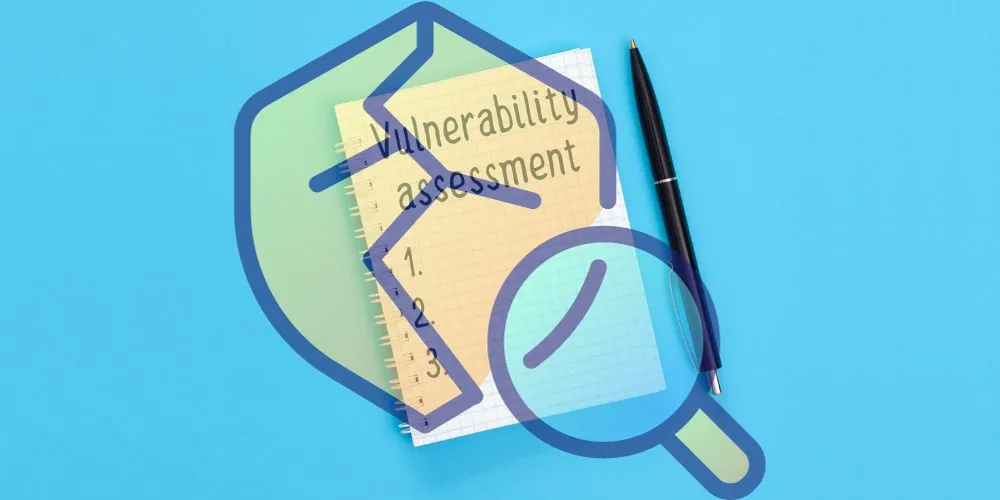In the ever-expanding landscape of cloud computing, ensuring the security of digital assets is paramount. Cloud Vulnerability Assessment is critical in identifying and mitigating potential security risks within cloud environments. This comprehensive exploration delves into the multifaceted world of Cloud Vulnerability Assessment, unraveling its core principles, challenges, innovative solutions, and the transformative impact it has on fortifying the integrity of cloud-based services.
The Significance of Cloud Vulnerability Assessment
Cloud Vulnerability Assessment plays a pivotal role in fortifying the security posture of cloud environments. It involves systematically identifying, evaluating, and mitigating vulnerabilities that malicious actors could exploit. The significance of Cloud Vulnerability Assessment lies in its ability to proactively address security risks, safeguard sensitive data, and ensure the robustness of cloud-based infrastructure against a constantly evolving threat landscape.
Core Principles and Components of Cloud Vulnerability Assessment
At the heart of Cloud Vulnerability Assessment are core principles centered on thorough analysis, continuous monitoring, and timely remediation. The components of Cloud Vulnerability Assessment include vulnerability scanning, penetration testing, risk analysis, and remediation strategies. Collectively, these components create a resilient security framework that aligns with industry best practices and regulatory requirements.
Vulnerability Scanning
Vulnerability scanning is a foundational component of Cloud Vulnerability Assessment, systematically examining cloud infrastructure to identify potential weaknesses. Automated tools scan networks, applications, and systems to discover vulnerabilities, providing a comprehensive overview of potential security risks. Vulnerability scanning ensures a proactive approach to security, allowing organizations to address potential issues before they can be exploited.
Penetration Testing
Penetration testing, often referred to as ethical hacking, is a proactive method within Cloud Vulnerability Assessment that involves simulated attacks to evaluate the security of cloud systems. Skilled professionals mimic real-world hacking scenarios to identify vulnerabilities that may not be apparent through automated scans. Penetration testing provides a hands-on assessment of security measures, helping organizations understand how well their systems can withstand actual cyber threats.
Risk Analysis
Risk analysis is a crucial phase in Cloud Vulnerability Assessment, involving the evaluation of identified vulnerabilities based on their potential impact and likelihood of exploitation. This process helps prioritize remediation efforts, focusing on vulnerabilities that pose the highest risk to the organization’s security. Risk analysis ensures that resources are allocated efficiently to address the most critical security concerns.
Remediation Strategies
Remediation strategies involve developing and implementing corrective measures to address identified vulnerabilities. These strategies may include software patching, configuration adjustments, and security policy enhancements. The goal is to mitigate or eliminate vulnerabilities, reducing the likelihood of successful cyberattacks. Effective remediation strategies are essential for maintaining a secure and resilient cloud environment.
Challenges in Cloud Vulnerability Assessment
Despite its significance, Cloud Vulnerability Assessment faces several challenges that require strategic solutions to ensure the effectiveness of security measures within cloud environments.
Dynamic Cloud Environments
The dynamic nature of cloud environments poses a challenge for vulnerability assessment. Continuous changes in infrastructure, configurations, and deployed applications require ongoing assessment to promptly identify and address new vulnerabilities. Adapting vulnerability assessment processes to the dynamic nature of the cloud is crucial for maintaining a proactive security stance.
Scale and Complexity
The scale and complexity of cloud environments can make it challenging to conduct comprehensive vulnerability assessments. Large-scale infrastructures with numerous interconnected components demand sophisticated tools and methodologies to ensure thorough coverage. Scalable and automated approaches are essential for effectively assessing the security of expansive cloud ecosystems.
Multi-Cloud and Hybrid Environments:
Organizations often operate in multi-cloud or hybrid environments, introducing additional complexity to vulnerability assessment. Ensuring a unified and consistent approach across diverse cloud platforms is crucial. Compatibility issues and variations in security features must be addressed to provide a cohesive vulnerability assessment strategy in multi-cloud and hybrid scenarios.
Evolving Threat Landscape
The ever-evolving threat landscape poses a continuous challenge for Cloud Vulnerability Assessment. New attack vectors, sophisticated malware, and evolving tactics employed by cyber adversaries necessitate ongoing refinement of assessment methodologies. Staying ahead of emerging threats requires a proactive and adaptive approach to vulnerability assessment.
Innovative Solutions for Future Cloud Vulnerability Assessment
The future of Cloud Vulnerability Assessment is marked by innovative solutions that leverage advanced technologies and methodologies to address emerging challenges and enhance overall security posture.
Artificial Intelligence and Machine Learning Integration
Integrating Artificial Intelligence (AI) and Machine Learning (ML) technologies is a transformative trend in Cloud Vulnerability Assessment. These technologies enhance the efficiency and accuracy of vulnerability identification by analyzing patterns, detecting anomalies, and predicting potential security risks. AI and ML contribute to more proactive and adaptive vulnerability assessment strategies.
Automated Remediation
Automated remediation is an emerging solution aimed at streamlining the response to identified vulnerabilities. By leveraging automation tools, organizations can implement corrective actions promptly, reducing the time between vulnerability detection and remediation. Automated remediation enhances the agility and responsiveness of security measures within cloud environments.
Threat Intelligence Integration
Integrating threat intelligence feeds into Cloud Vulnerability Assessment processes enhances the understanding of current and emerging threats. By incorporating real-time threat data, organizations can prioritize vulnerabilities based on the likelihood of exploitation in the context of the broader threat landscape. Threat intelligence integration ensures a more context-aware and informed vulnerability assessment strategy.
Conclusion
Cloud Vulnerability Assessment stands as a linchpin for maintaining the security and integrity of cloud-based services. The significance of identifying, analyzing, and mitigating vulnerabilities cannot be overstated in the face of an evolving cyber threat landscape. Despite challenges posed by dynamic environments and sophisticated adversaries, ongoing innovations in vulnerability assessment, including the integration of AI, automated remediation, and threat intelligence, promise a future where cloud environments can remain resilient and secure.
As organizations continue to entrust their digital assets to the cloud, strategic and dynamic Vulnerability Assessment will remain instrumental in safeguarding sensitive data, maintaining regulatory compliance, and fostering trust in the integrity of cloud-based services.





